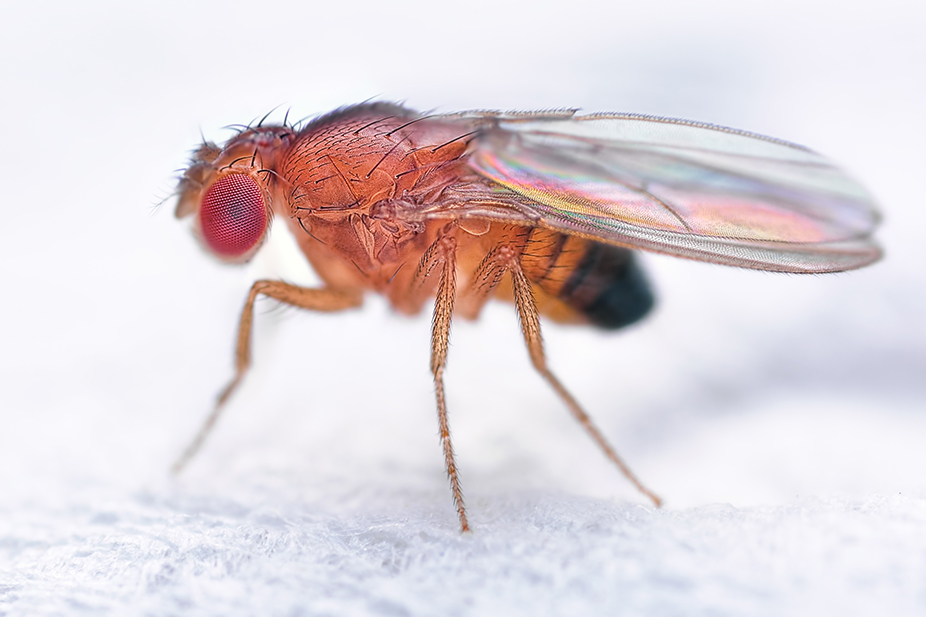5 Tips to Introducing Fruit Flies into the Classroom

Many discoveries around inheritance began using Drosophila melanogaster. Today, Drosophila remains a very relevant model organism. Drosophila is one of the most popular organisms in genetics studies as it is easily cultured with a short generation time and the range of mutants available for crosses. Due to 4 chromosome pairs, with chromosome pair 1 being the sex chromosomes, we are able to study both autosomal and sex-linked inheritance patterns with Drosophila. To study gene linkage, mutations at multiple gene loci are available for chromosome pairs 1, 2, and 3. To help you introduce fruit fly studies in the classroom, we have provided a few tips and tricks to help select the right specimens, plan your lab activities to make it a rewarding learning opportunity for students.
1.Preparing media
To prepare media for the Drosophila, add equal proportions of dry Formula 4-24® and water to a vial.
2.Anesthetizing the flies
FlyNap® provides a safer less flammable alternative to ether anesthetizing. Anesthetizing is used to select males and females for crosses and score the phenotypes.
3. Scheduling
Typically, Drosophila labs involve crossing parent flies and conducting detailed observation on 2 generations of offspring (F1 and F2). The process will take 5 weeks or more. Planning is integral to making the most out of your specimen observation. Below is a guide to help you schedule your lab activities. Drosophila development will vary depending on a number of factors including temperature; thus, the below times are approximations only.
- Preparation: extract all adult flies from the parent vials 8 to 12 hours prior to the first lab. Once mated, female flies can store sperm; making separation necessary. Before the lab you will observe new flies emerging in the vials and students will be able to identify unmated female flies for controlled crosses.
- Day 1: To prepare a cross, select approximately 6 males of one parent type and 6 female flies of the other parent type. You can then place them in a new vial with culture medium.
- Days 7 to 10: Extractparent flies from the vials to prevent them from mating with their offspring (F1). This would confuse counts for the F2. Days 12 to 14: During this time, you will see F1 flies start emerging in the vials. Students can then move these F1 flies in new vials with fresh culture so they may mate and produce an F2. It is not necessary for F1 females to be virgins as the intention is for them to mate with F1 males regardless.
- Days 21 to 24: Take F1 flies out of the vials.
- Days 26 to 28: During this time, you will see F2 flies emerging in the vials. After you observe the first F2 flies emerging, you can begin to score phenotypes the next day. Do not return flies to the vials once they have been counted. Conduct counts every second day for 10 days. The last lab will be approximately 36 to 38 days after the first. You will find that male flies typically emerge later than females. This delay is also evident in some mutations; thus, data can skew if counts are concluded too soon.
4.Choosing the right specimen.
Drosophila are great models for a number of studies. However, it is important to find the right specimen for your requirements. We recommend you:
- Use white crossed with wild-type for sex-linkage,
- Use vestigial x wild-type or sepia x wild-type for monohybrid crosses.
- Use vestigial x sepia and vestigial x ebony for dihybrid crosses because:
- The contrasting phenotypes are easily identifiable to by beginners
- While most mutant alleles are recessive to their wild-type allele, ‘wrinkled’ is a dominant mutation.
5.Remember the flies will not all hatch at the same time
The process of female egg laying occurs over several days, meaning they will not hatch simultaneously. When you receive your vial, you may find few or no flies. However, substantial larvae and pupae will be present. Over 10 days, 50-100 flies may be produced from a single parent vial flies. F1 fly vials will typically produce approximately 30 to 75 over the same time period.
